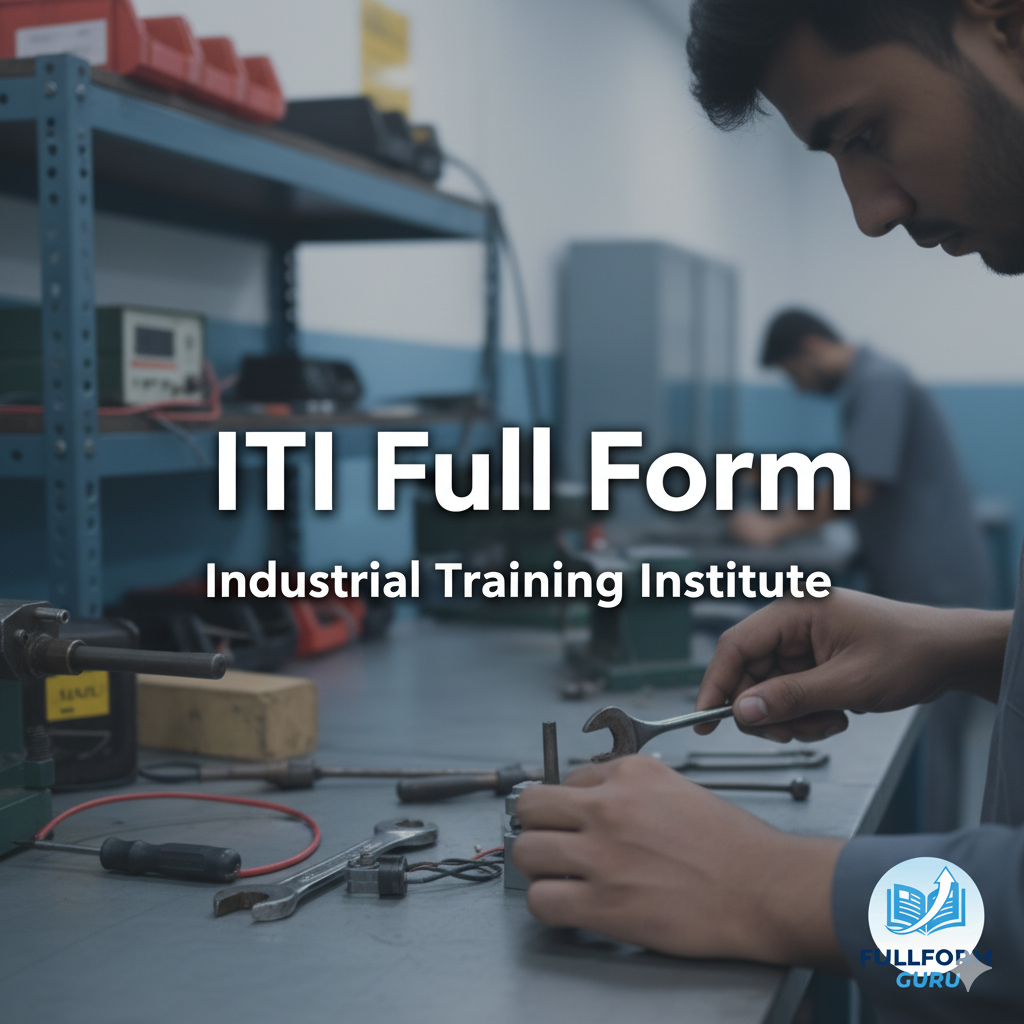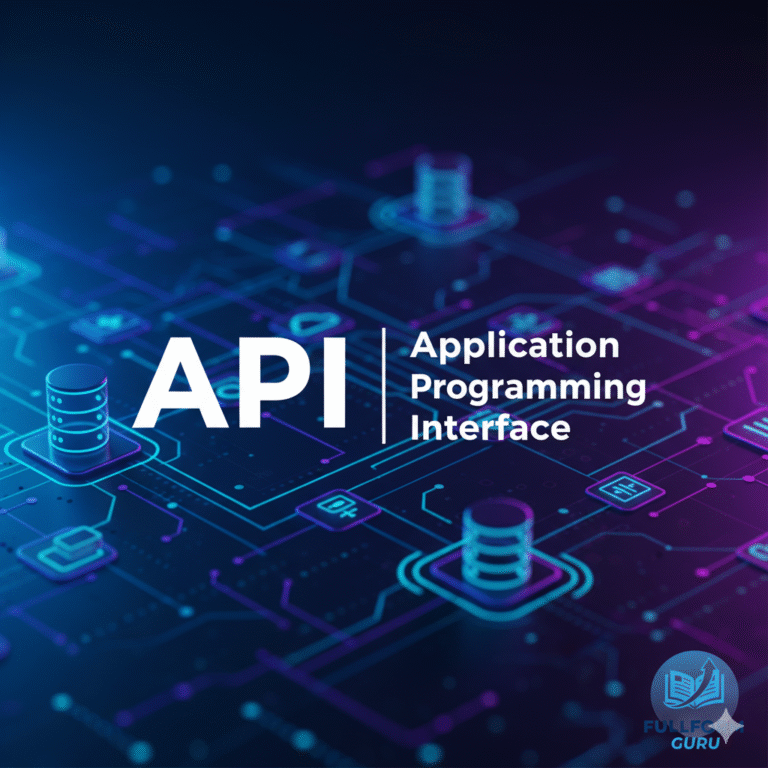ITI Full Form – Full Form of ITI

ITI Full Form: Courses, Eligibility, Benefits, and Career Opportunities
Introduction
The ITI Full Form is Industrial Training Institute, In the world of education and skills development, vocational training plays a vital role. One of the most recognized institutions offering skill-based education is the ITI. Many students and professionals came across this term but may not fully understand its meaning, purpose, and opportunities.
The ITI, Industrial Training Institute, is structured to provide technical and vocational training to individuals, enabling them to develop practical skills and find employment in various industries. This article explains the ITI Full Form, the courses it offers, eligibility requirements, career opportunities, and the importance of vocational training in today’s competitive job market.
ITI Full Form and Meaning
The ITI Full Form is Industrial Training Institute, which focuses on providing skill-based technical education. ITIs are institutions that offer education and hands-on training in technical and non-technical trades. The aim is to equip individuals with the practical knowledge and industry-specific skills that allow them to secure jobs, start small businesses, or continue higher education in technical fields.
Unlike conventional academic programs, ITIs focus more on skill applications and real-world training. It makes them especially valuable for students who want to directly enter the workforce or those who prefer practical knowledge over theoretical study.
Role and Importance of ITI (Why It Matters)
Across the world, ITI education is valuable as industries demand practical skills with knowledge, not merely theoretical qualifications.
- Skill Development: ITI offers practical training in various trades, including electrician, welder, mechanic, and computer operator.
- Employment Readiness: Students completing ITI courses are well-prepared to join the workforce immediately upon completion, thereby reducing the gap between education and employment.
- Global Relevance: Many countries recognize vocational training, and ITI-certified individuals often find opportunities abroad as well.
- Support for Industry Growth: Industries benefit from ITI graduates because they bring specific skills that match job requirements.
By bridging the gap between learning and employment, ITIs play a crucial role in workforce development, underscoring the importance of understanding the ITI Full Form.
Types of ITI Courses
ITI courses fall into two main categories:
- Engineering Trades – Focus on technical skills such as mechanics, electronics, information technology, and fitting.
- Non-Engineering Trades – Cover fields like hospitality, fashion designing, healthcare, stenography, and computer applications.
Both categories help students select a path that suits their interests and career goals.

Duration of ITI Courses
The duration of ITI programs varies depending on the trade selected.
| Course Type | Duration |
| Short-Term Certification | 6 months – 1 year |
| Standard ITI Trade Course | 1 – 2 years |
This flexibility enables learners to select a course that fits their career objectives and time availability, making the ITI Full Form relevant for students planning skill-based careers.
Eligibility & Basic Requirements
To enroll in ITI courses, candidates must fulfill certain eligibility conditions:
- Educational Qualification: Generally, candidates should have completed at least grade 8, grade 10, or grade 12, depending on the trade.
- Age Limit: The minimum age is usually 14 years, and the maximum varies between 35 and 40 years, depending on the institution.
- Documents Required: To apply, candidates must provide valid identification, educational certificates, and proof of residence.
- Interest and Aptitude: For engineering trades, it is better to have an interest in mathematics, science, or technology. Non-engineering trades value skills such as communication, creativity, and customer service.
Admission Process in ITI
The admission procedure is generally straightforward and globally similar across institutions:
- Application through official portals or directly at the ITI.
- Submission of educational and personal documents.
- Merit-based selection or entrance test (depending on the institute).
- Payment of course fees.
- Allotment of seats and commencement of training.
This simple process makes ITI accessible to students from different educational and financial backgrounds, once they understand the ITI Full Form and its purpose.
Skills and Knowledge Gained in ITI
ITI courses are structured to develop practical skills that directly match industry requirements. Some examples of skills learned include:
- Electrical maintenance and wiring.
- Computer applications and basic coding.
- Automobile repair and servicing.
- Welding, fitting, and machinery operation.
- Tailoring, designing, and creative trades.
- Healthcare assistance and laboratory support.
By mastering these skills, students become job-ready and can help with industrial growth.

Career Opportunities After ITI
Completing an ITI program opens multiple career paths, and knowing the ITI Full Form helps students choose the right direction. Some of the most common options are:
- Direct Employment: Graduates can work in industries such as manufacturing, construction, automotive, IT services, and hospitality
- Self-Employment: Many ITI graduates start small businesses such as repair shops, tailoring units, or service centers.
- Apprenticeships: Students can apply for apprenticeship programs in large organizations to gain further experience.
- Higher Studies: ITI students can pursue advanced diploma programs or continue their education in polytechnic institutes or engineering colleges.
- Global Opportunities: Skilled ITI professionals often find opportunities in international markets where vocational expertise is highly valued.
Comparison with Conventional Education
The difference between ITI education and traditional academic education lies in its focus.
| Feature | ITI Education | Conventional Education |
| Focus | Practical skills and training | Theoretical knowledge |
| Duration | 6 months – 2 years | 3 – 5 years (degree programs) |
| Cost of Education | Generally lower | Higher in most cases |
| Employment Readiness | Immediate | Requires additional training |
| Suitability | Students seeking skill jobs | Students pursuing academic careers |
It shows that ITI is a good choice for students.
Benefits of ITI Education
Enrolling in an ITI offers multiple advantages:
- Shorter course duration compared to traditional degrees.
- Lower education costs make it affordable for students.
- Hands-on training ensures immediate job readiness.
- A wide range of trades to choose from based on interest.
- Opportunities for self-employment and entrepreneurship.
- Recognition of ITI skills globally in industries like construction, IT, and manufacturing.
Common Myths About ITI
Many misconceptions exist about ITI, but the reality is very different:
- Myth: ITI is only for academically weak students.
- Fact: ITI is for anyone who wants to focus on skill-based education.
- Myth: ITI graduates cannot build strong careers.
- Fact: Many ITI professionals achieve success by working abroad, starting businesses, or continuing higher studies.
- Myth: ITI trades are outdated.
- Fact: ITI has updated courses in computer technology, renewable energy, and modern industries.
How to Choose the Right ITI Trade
Selecting the right trade is crucial for career success. Here are some tips:
- Assess your interests and strengths (technical, creative, or service-oriented).
- Check the demand for specific trades in your local and global job market.
- Research the future scope of the trade, such as IT and renewable energy sources.
- Seek guidance from career counselors or professionals in the industry.
- Match your choice with long-term career goals.
Conclusion
The Full Form of ITI (Industrial Training Institute) represents more than just vocational training; it symbolizes the empowerment of individuals with practical skills that lead to employment, self-reliance, and growth. In today’s global economy, industries require skilled professionals, and ITI graduates are fulfilling this requirement.
For students who wish to build a career quickly, explore self-employment, or gain industry-ready expertise, ITI is a valuable plan. By choosing the right trade and focusing on skill mastery, individuals can achieve professional success and financial independence.
Remember, education is not only about degrees but also about skills that can shape your future. Understanding the ITI Full Form and choosing the right trade ensures that with ITI, you are not only learning a trade but also investing in a brighter and more confident tomorrow.







